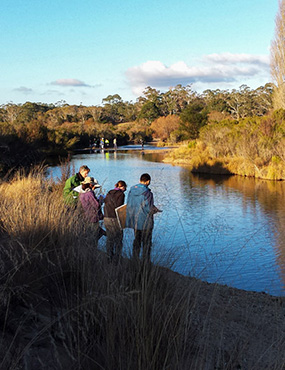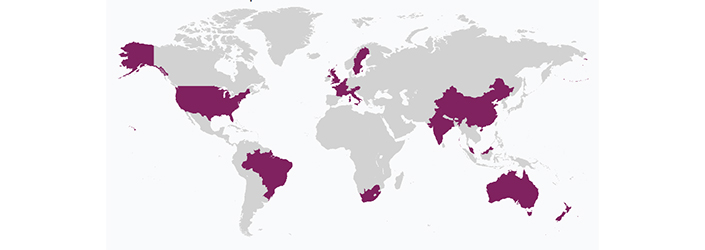Contact us
- School of Natural Sciences
- Macquarie University NSW 2109
- E: fse.natsci-admin@mq.edu.au
The River Styles Framework is helping decision-makers around the world to implement strategic, science-based management of river systems.

The River Styles Framework has been applied on six continents and continues to be adopted by new countries, supported by a portfolio of professional training courses.
More than 253,000 kilometres of river length has been mapped using River Styles in Australia and overseas. This number continues to grow as more countries embrace the value of geomorphology in integrated river management.
More than 350 professionals have now been trained in river management.
The Framework has been developed over 20 years of research, resulting in more than 55 peer-reviewed articles and 6500 book sales worldwide.
Rivers in Australia, Europe, North America, South America and Asia are being managed more effectively through the use of the River Styles Framework, a set of geomorphic procedures and tools developed at Macquarie University to interpret river character, behaviour, condition and recovery potential.
Over 225,735 kilometres of stream length in New South Wales (NSW) and some 28,000 kilometres overseas has been assessed using the Framework. Highlights include adoption by the European Union, integration into management planning for America's iconic Colombia River, and use in India's Ganga Basin, home to over 45 million people.
Use of the Framework has generated significant improvements in river health throughout NSW and overseas, making catchment management more sustainable and benefiting millions.
Professor Kirstie Fryirs
Macquarie University
Adjunct Professor Gary Brierley
Macquarie University
Training in the River Styles Framework is offered via a five day professional short course on analysis of river character and behaviour (for accreditation), two to three day short course on river condition and recovery potential, and one day industry-hosted workshops on introduction to fluvial geomorphology and introduction to the River Styles Framework. For further information visit www.riversyles.com. Training is offered in Australia and internationally.
Macquarie University has supported the River Styles Framework through developing its underpinning research and supporting its business activities. Multiple parts of the University have enabled the Framework by developing and delivering a value proposition to end-users. Impact is achieved largely by providing end-user training using a suite of proprietary material.
The University gave vital early funding support to the research on which the Framework is based and consistently helped the Framework to attract funding, particularly ARC Linkage grants.
Macquarie University incubated the River Styles Framework so that by 2016 the program was able to fund itself almost entirely through external revenue, primarily through professional training courses and accreditation delivered in Australia and overseas.
The River Styles Framework is founded on pure research on river forms and processes, geomorphic river responses to human-disturbance, interpretation of river evolution, condition and recovery, and forecasting river trajectories and responses to future pressures. Research on the River Styles Framework culminated in a book published by Blackwell in 2005. Two subsequent books have been published by Island Press (2008) and John Wiley and Sons (2013) and over 55 peer-reviewed journal papers relate to River Styles.
Interdisciplinary research has examined the links between fluvial geomorphology and habitat availability, riparian vegetation dynamics and river ecology. Applied research with end-users has shown how the geomorphology that underpins the River Styles Framework can be used in river management prioritisation, planning, policy and practice, and as a transformative communication tool.
The research has been conducted by Professor Gary Brierley and Professor Kirstie Fryirs and their teams. Since 2002, Professor Brierley has held full-time and Adjunct Professor roles at Macquarie University and Professor Fryirs has been full-time at Macquarie University. Four postdoctoral fellows, 10 PhD, more than 20 Masters and 25 Honours completions conducted River Styles related research from 2002 to 2016. Multiple end-user partner investigators have also undertaken, and co-published, research as part of the River Styles initiative.
The USA, Brazil, Sweden, the UK, France, Austria, Italy, South Africa, China, Pakistan, India, Malaysia, Australia, New Zealand.

The world-leading approach to river management
Find out more